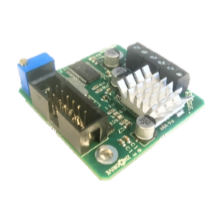
As more and more technology is made cordless or remote the issue of using solar power or other forms of renewable energy as the key power source for a range of applications has become more and more fundamental. Whilst traditional applications would almost always place a battery in between the power source and the ultimate use of the power, increasing numbers of applications are looking to bypass this completely in order to reduce cost and servicing requirements.
So what does this mean for intelligent motor controls?
Well firstly, the most obvious challenge is dealing with a wide ranging input voltage and a potentially unreliable power source which can be prone to interruptions. However, in almost all circumstances it is entirely feasible to address these challenges with a carefully designed motor controller.
The most difficult areas to address are at the lower extremes of the power input. Motor controllers based on microcontrollers (as many Zikodrive controllers are) need to have a reliable input voltage in order for the microcontroller to successfully operate. If the input voltage drops below this then it can cause unreliability and, depending on the application, this could have a significant impact on the overall performance of the controller. However, by introducing managed electronics which include circuits that carefully measure input voltage and switch the various parts of the circuit on in stages after measuring the input voltage and current, these issues can be addressed. Not surprisingly, the same applies in reverse. As power reduces at the end of the day or as a result of intermittent cloud cover it is also possible to switch parts of the circuit off to ensure stable and controlled performance. Once the cloud goes, the circuit can use the improved power source to switch everything back on again.
Measuring and monitoring are hugely important in successfully operating this type of control. By carefully monitoring input voltage and current and setting key performance limits it is possible to ensure long term reliable control without the risk of issues occurring. These measurements can also be channeled into signal inputs as required to keep the user up to date wherever they are. Whether it’s a simple LED or buzzer signal or a link to an RF or SMS system this can be achieved quickly and simply to keep the user up to date on the status of the controls.
A further challenge with this type of application is finding the maximum power point of voltage and current. As the voltage and current output from the panels change throughout the day, the optimum point will move. However, intelligent controllers can use a range of methods to track and use the optimum power point in order to deliver the maximum possible power to the end application.
For more information on this issue or to discuss a project please contact us and we will be happy to help.